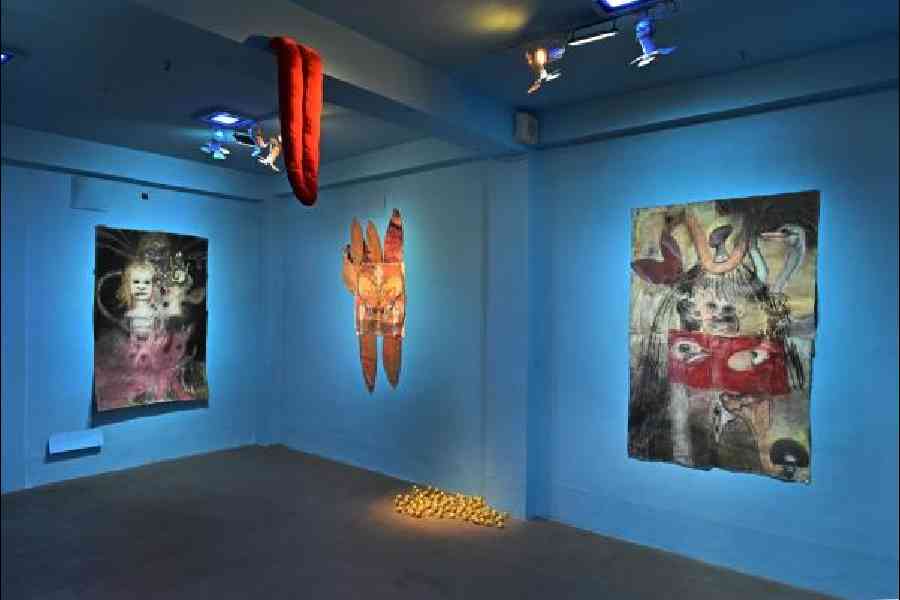Modern feminism has tried to reclaim pejorative expressions like ‘bitch’ and ‘slut’ in order to fight the control that these cuss words exert over women’s freedom and their sexuality. This is what the artist, Daniela Belinga Agossa, and the curator, Ayan Mukherjee, have been trying to do too with their ‘When Did Bitch Become A Bad Word’ series. In When Did Bitch Become A Bad Word: Kali and the Fightbacks, the second edition of the project being held at A.M ( Art Multi-disciplines), the artist, Aryama Pal, joins the two.
Unlike the first edition wherein the gallery walls were painted with the fleshy pink tone of the womb, this time, the small space is dark blue, a shade instantly reminiscent of the goddess. This association is enhanced by the large fabric tongue hanging from the ceiling, the texture of its felt surface setting the viewer on edge much like Méret Oppenheim’s sculpture, Le Déjeuner en fourrure. The image of Kali is a strong one because the deity is often accompanied by a canine drinking the blood of monsters before it falls on the earth. The ‘bitch’, in this instance, thus becomes the protector, and not a slur.
Strewn on the floor to the right are skulls of various shapes and sizes: do these belong to women who have succumbed to the abuse that they had to face or are these the skulls of the vanquished abusers who have been defeated by the spirited women whose faces are painted and pasted on the wall opposite? On yet another wall, Agossa ponders the symbolism of the womb — a persistent motif in her works. The womb can be seen just as another bodily appendage — a lump of meat so to speak — or it can be the most powerful thing in the world for bringing forth new life. But the artist overlays the womb with the image of a pitbull to signify its power and ferociousness.
Agossa’s style can seem whimsical and inchoate, but to dismiss it as so would be a mistake. Her strong feminist idiom acts as a thread that ties together the disparate themes of the show.










